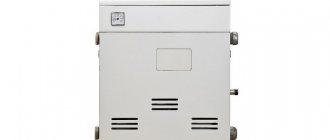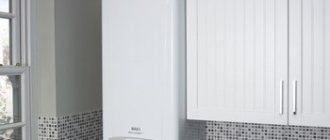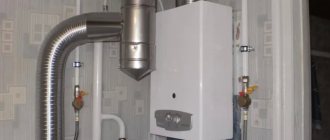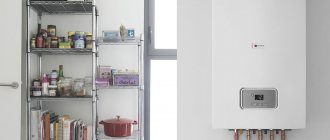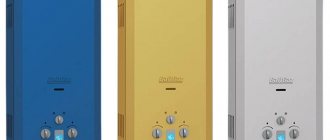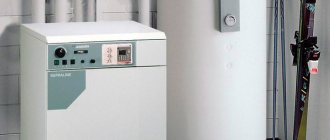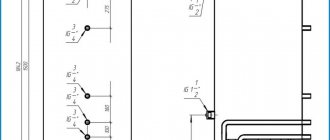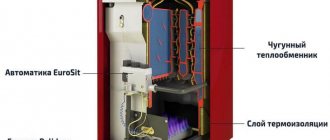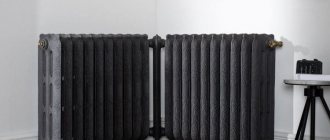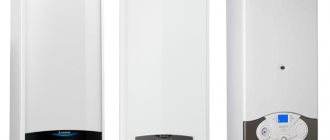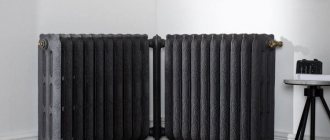Residents of the private sector, owners of country houses and cottages today are showing increased interest in heating devices running on solid fuel. There may be several reasons for such attention to solid fuel boilers, starting with the desire to achieve independence from a centralized energy supply and, conversely, due to the lack of it. The pace of suburban housing construction today is significantly faster than the speed of work on gasification of populated areas, so the only way out of this situation is cast iron heating boilers using solid fuel.
Why cast iron boilers when there is a wide selection of models of steel solid fuel boilers? We suggest that you familiarize yourself with the design features of solid fuel cast iron boilers and answer the question accordingly.
Advantages and disadvantages of cast iron boilers
The boiler heat exchanger is the material of the container in which the water will be located, and through which it will be heated from a heat source. The durability of the entire unit, as well as its efficiency, depends on this material. If the heat exchanger fails, then most likely the entire boiler will have to be replaced.
Cast iron is the most reliable and durable material. It is an alloy of iron and carbon. The iron in the alloy gives the ability to resist high temperatures, and the high carbon content gives strength, hardness and anti-corrosion properties. It is no coincidence that cast iron has long been used for forging fences, fences and kitchen utensils.
Advantages of cast iron boilers for home:
- Long service life: several decades.
- The material resists corrosion well and does not rust.
- There is almost no scale deposited on cast iron. A small layer forms over a long period of use and can be easily removed by simple washing.
- The boilers have several sections that can be changed individually. This increases the service life and reduces boiler repair costs.
- Thanks to the sectional structure, the amount of hot water can be increased by adding sections separately. That is, if an extension or another floor appears in the house, you can easily increase the power of the boiler room.
- Small size with high heat transfer.
A cast iron boiler is primarily designed for long-term and active use. It is best suited for houses where people live permanently.
This type of heat exchanger also has its disadvantages:
- Since cast iron is a very fragile and heavy material, these products are difficult to transport. During transportation they must be treated very carefully so as not to be damaged.
- Cast iron is very sensitive to temperature changes. If you pour cold water into a hot boiler, cracks will appear in it, which will entail replacing one or more sections.
- The price of cast iron boilers is much higher than that of steel ones. But the cost of the boiler pays off in several years. During the service life of one cast iron product, 3-4 steel units can be replaced.
If we compare the pros and cons, then a cast iron product turns out to be significantly more profitable with careful handling and careful operation.
Flaws
But the inability to weld cast iron also has negative consequences: once cracks occur, they cannot be repaired. And this material is fragile. Moreover, he
Long-burning cast iron pyrolysis boilers. The main disadvantage is the fragility of the material and the impossibility of repairing cracks
it cracks both under mechanical stress (which is why it may be better to transport individual carefully packed sections rather than the entire assembled structure), and under sudden temperature changes. If water gets on hot cast iron, it will crack. Therefore, long-burning cast iron solid fuel boilers are demanding in terms of operating conditions:
- The temperature difference between return and supply water should not exceed 20oC. A significant limitation that reduces the efficiency of the heating system. In addition, tracking this parameter is quite difficult.
- Do not allow the boiler to overheat or get cold water, much less snow, on it.
- Do not allow the temperature in the boiler room to drop below 0oC.
In the latest models, overheating of the boilers is monitored automatically, which, if necessary, turns on the cooling circuit. This is how Beaver Proterm works.
The large heat capacity for long-burning cast-iron boilers can be considered rather as a disadvantage: it takes more time to accelerate the system and reach normal operating mode (and fuel too). And the fact that after extinguishing the boiler will continue to give off heat for a long time is practically not encouraging: the equipment is used in smoldering mode constantly and it is very rarely allowed to stop.
The negative aspects also include the large mass of such boilers. If all the equipment weighs no more than 700 kg when fully loaded, you can do without a special foundation for its installation. But if its mass is higher, you will have to prepare a separate foundation that is not connected to the main foundation.
Types of cast iron boilers
Cast iron boilers are divided among themselves according to several parameters:
- Type of fuel
- Number of sections
- Type of installation.
Various models are available for wall or floor installation. Floor standing boilers usually have a larger volume. Most cast iron boilers are equipped with several sections for heating water. The boiler may contain from 2 to 4 sections.
Advice. When choosing a boiler, you should pay attention to its power. It is calculated from the formula: 1 kW per 0 square meters of heated area.
Boilers are also divided by type of fuel. The design of the equipment primarily depends on the type of fuel: wall thickness, fuel supply structure, boiler cooling system. Solid fuel and liquid fuel boilers are usually floor-standing, as they have a large combustion chamber.
Gas boilers are often produced as wall-mounted ones, which saves space in the boiler room. But large models can also be installed on the floor.
Important! When choosing a unit, you need to decide in advance what fuel will be used. There are models for 2-3 types of fuel, or which can receive heat from the electrical network and other fuel. Universal options are the most convenient.
Popular manufacturers
Among the existing Belarusian companies that are popular in the CIS markets for climate control equipment are:
- Belkomin produces units of the popular TIS brand.
- OJSC Mozyrselmash, which produces solid fuel boilers.
- Minsk Electric Plant provides Raton units.
There are no significant differences between the presented Belarusian-made units. These are boilers made of cast iron and steel, single-circuit and double-circuit varieties of devices. In the first version, the devices are produced only for the heating load, and in the second - with additional DHW heating.
There are also other boiler manufacturers in the republic: Teplopribor and Brestselmash. However, they offer a much smaller range of products.
Products of the Brestselmash company
In addition, most companies not only produce ready-made heating systems, but also offer customers repair and installation services, which is practical.
Gas boilers
Gas cast iron boilers are the most popular models, as they operate on the most accessible and cheap fuel. Such home heating will be the cheapest compared to central heating or the use of solid or liquid fuel for a private boiler room. Another advantage of gas fuel is a high degree of autonomy. The boiler room can operate on it for a long time; there is no need to add or add fuel. Only an electric boiler is more convenient in terms of autonomy.
Gas can be supplied to the boiler room either from a central gas pipeline, which will be the most convenient, or from cylinders. Bottled gas is not very convenient to use, since the fuel must be stored in a specially equipped place.
Installation of gas boilers is subject to strict requirements:
- Equip the ventilation and gas chimney of the boiler room.
- After installing the necessary equipment, the boiler room must be registered with the gas service.
- A gas boiler requires annual inspection and maintenance by the gas service. It costs approximately 500 rubles.
- If the gas is contained in cylinders, cutting them requires a separate room outside the house, with ventilated valves or doors.
Despite all the difficulties, many people choose a gas boiler because of the low cost of fuel.
RATON
The RATON brand (boiler price is about $700 ) is worthy of special attention, since the manufacturer offers consumers products with indicators that interest consumers. So, the installations of the brand in question can be of the following models:
- KOS - TV, which allows you to obtain thermal energy from firewood with any level of humidity;
- KS – T, which is designed for the use of coal;
- KOS is a TVA, which is automated and designed to receive heat from coal and pellets.
KOS – TVA
Let's consider the KOS - TVA models. Their rated power is 25 kW, and their efficiency is 84% if coal is used for heating. A special feature of the boiler is that it allows automated use of pellets with coal. In this case, the proper parameters of the granules must be observed. The maximum coolant temperature is one hundred degrees Celsius, and the operating pressure is 1.5 Bar.
KOS – T
KS-T, this model is designed to use solid fuel. The power of the installation is 12.5 kW, the coal used is anthracite AO. According to the manufacturer, the efficiency of the device is 77%, the pressure for which the boiler was designed is 1 bar. This is a boiler that is characterized by its small size and is designed to produce heat in residential premises. Heat can be obtained from one load of fuel for 8 hours, which is a fairly acceptable indicator for small installation parameters.
KOS – TV
KOS-TV are devices that are designed for the use of firewood; they are distinguished by the fact that they can extract heat from waste wood, wet firewood and coal. The efficiency of the installation is at the level of 84%, the maximum pressure for which the boiler is designed is 1.5 Bar. The manufacturer offers two versions of the model in question with different powers, equal to 23 and 45 kW.
Electric boiler
This is the most convenient type of equipment, but also the most expensive. In any case, it is cheaper to connect central gas or central heating to the house. In addition, this type of boiler requires a powerful electrical connection - around 9-15 kW. Not every village has such networks.
On the contrary, in villages where there is a fairly powerful supply of electricity, as a rule, there is also the rest of the infrastructure: central heating, a gas pipeline or good roads. Therefore, an electric boiler, despite all its convenience, becomes less profitable.
Mozyrselmash
The last brand that will be considered is Mozyrselmash (boiler price from $140 ). Boilers from this manufacturer are distinguished by reasonable prices and simple design. These boilers can be called the simplest of installations, based on the principle of direct combustion of solid fuel and with a power in the range of 20-80 kW. Prices from this manufacturer are probably the lowest on the market for similar products.
The principle of their operation is the same as that of the previously discussed boilers. At the same time, the specificity of the installations from Mozyrselmash differs in that the air is supplied due to the principle of natural draft. The intensity of work can be adjusted manually or with a thermostatic regulator. Boilers of the brand in question can be classified by power:
- up to 50 kW: the units have a wall thickness of 3 mm and are designed for an operating pressure of 1 bar;
- more than 50 kW: wall thickness – 5 mm; pressure 3 bar.
According to the manufacturer, all devices of this brand have an efficiency of 80% .
Boilers from Belarusian manufacturers are known in our country not only because of the geographical proximity of the country of production, but also because of their quality, simplicity of design and reasonable prices.
Boilers for solid fuel
A solid fuel cast iron boiler runs on wood, coal, peat or special briquettes. These boilers are always installed on the floor due to their heavy weight and large combustion chambers.
The only convenience of this type of boiler is its ease of installation and use. The equipment does not need to be registered and maintained. You can heat it immediately after installation.
Solid fuel has low efficiency. It is also very inconvenient:
- Firewood must be stored somewhere so that it does not become damp. They need to be pricked and worn, and they are heavy.
- Coal also needs to be stored somewhere. But there is always a lot of dust flying from it.
- Coal and firewood must be regularly added to the combustion chamber. This must be done every few hours.
- Peat briquettes also generate dust and stain everything around. Peat briquettes can be thrown into the boiler much less often than firewood or coal. Such a boiler can operate all night without human intervention.
- Boilers require constant cleaning of soot.
Solid fuel becomes a good option when liquid or gas cannot be used. In addition, this is a good temporary option in case the gas in the house runs out or the electricity is turned off.
Which chimney is better
When calculating the mass, do not forget to calculate the weight of the chimney. For cast iron boilers, you can install a sandwich pipe, or you can install a ceramic chimney. It is not recommended to install a brick chimney on pyrolysis boilers - due to the low temperatures of the smoke at the outlet of the furnace, it takes a long time to heat up (the heat capacity of brick is large), so condensation forms abundantly. It's difficult to fight him. And one more thing: for a brick chimney in combination with a cast-iron stove, you definitely need a separate foundation, and a fairly solid one at that.
As for the ceramic chimney, this is a very corrosion-resistant and durable type of chimney, but it is expensive and, due to its heavy weight, also requires a separate base. Therefore, as in most cases, the most acceptable option is a sandwich chimney.
Liquid fuel boilers
Liquid fuel boilers run on regular diesel, which is popularly called diesel fuel. The advantage of liquid fuel boilers is that there is no need to regularly add material to the combustion chamber. Just like gas fuel, diesel is supplied to the boiler automatically.
The disadvantage of such boilers is the high cost of fuel and the need to store it in a closed, warm room. Storing fuel in the house creates a fire hazard, and equipping a separate shed is expensive.
Liquid and solid fuel are convenient only as additional fuel, in case the electricity goes out or gas runs out.
But in any case, a cast-iron boiler in a house is convenient primarily because the building becomes autonomous from external highways, and therefore more comfortable.
Who to give preference
Foreign models offer an abundance of functions, excellent design and performance. But domestic or Belarusian models are better adapted for work in Russia.
Boiler market
Belarusian manufacturers understand the difficulties the devices will have to face. These problems include:
- Frequent failures in communications (including changes in gas pressure);
- Failures in electrical networks force Belarusian manufacturers to produce boilers that operate without replenishment from the existing electrical network;
- The selection criterion is the aesthetic appearance of the device and its affordable cost. Belarusian manufacturers offer devices with a modern design and at prices much lower than domestic models.
A wide range, a lot of models from several leading Belarusian manufacturers make such a purchase accessible to everyone. In addition, the advantages of such a purchase include its cost-effectiveness. The low cost of the device itself and savings in fuel consumption will allow the buyer to save money that he would have to spend on fuel for boilers.
Belarusian floor-standing boilers are the best option available also due to the high reliability and durability of the devices, the low cost of spare parts (replacement parts), and their availability in any region of the country.
